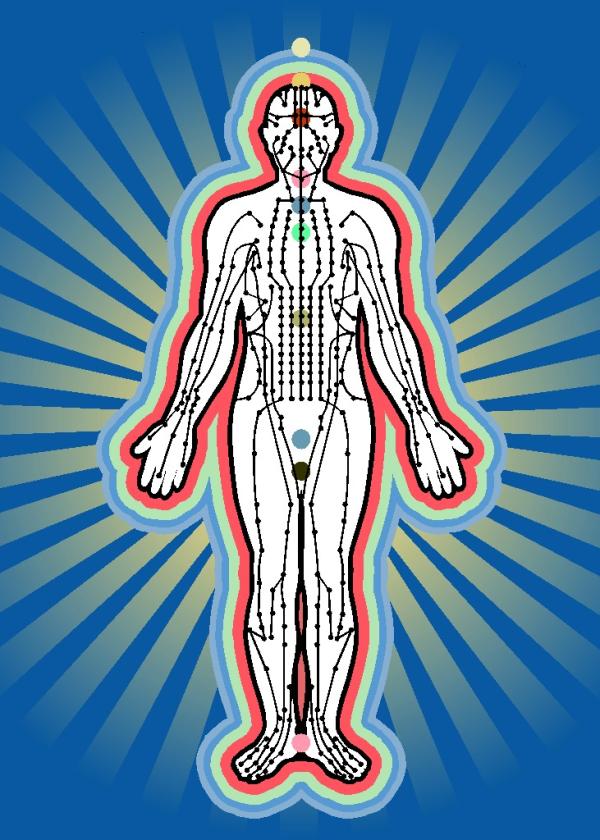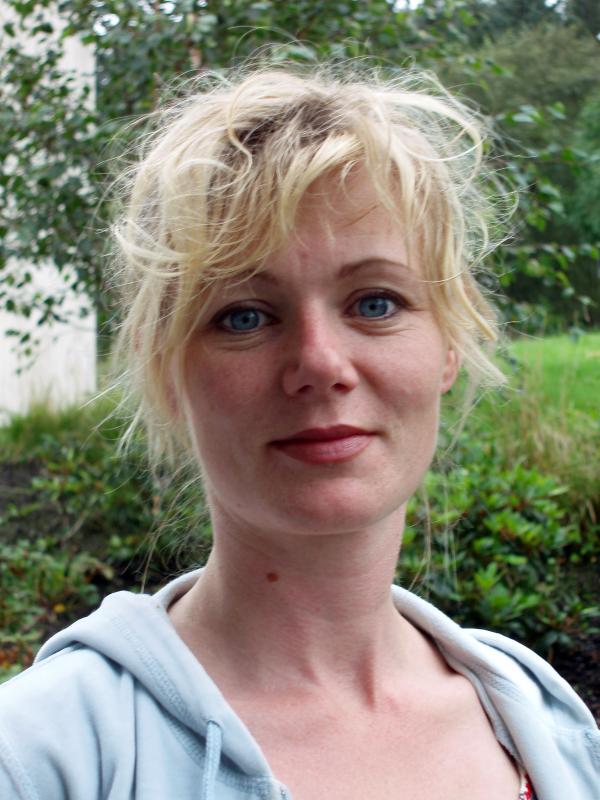
«Everything is relative in a relative world. We need both the good and the bad, the feminine and the masculine, and thus we need genders, man and woman. (…) But I still believe in the androgynous human being, modern man is more androgynous.»
These are the words of alternative therapist in healing and shamanism, «Turid». She is one of nine alternative therapists who are informants for historian of religion and gender researcher Anne Kalvig’s doctorate thesis «Spiritual health. A study of religiousness and gender in alternative therapy.»
Kalvig says that she chose alternative therapy as her research field because it appears to be a «goodie bag» of knowledge on today’s notions of body, gender, and spirituality. Like «Turid», many alternative therapists are also alternative regarding gender and body. Kalvig points to resemblances to the so-called queer movement, which wants to transcend the traditional gender categories and heteronormativity.
– There is something queer about the neo-religious alternative therapy fields of our time. To break down boundaries, particularly through self-development, is important to these groups, and many people want to overcome limitations and barriers related to gender, says Kalvig.
– The wish to understand oneself better may also open up to a bolder discussion of how we are shaped as individuals and as men and women, says Kalvig.
Widespread
Despite the allusion to queer, alternative therapy is far from a marginal phenomenon in present-day Norway. The alternative health market has exploded over the past years. In 2002 one out of three Norwegians had been in contact with an alternative therapist, and there is reason to believe that the number increases every year.
– Many of the ideas within this field have become mainstream. For instance, more people believe in reincarnation today compared to earlier, says Kalvig.
The alternative therapists that Kalvig studies, are rooted in the neo-religious New Age counter-cultures of the 1960s. Via crystals and channelling in the 1980s, the focus has moved towards body, health, and therapy.
– I am particularly interested in how spirituality is closely related to physical treatment, and how the connection between body and mind is reinterpreted, says Kalvig.
Among Kalvig’s informants it is a common belief that we consist of layers of several different bodies. The physical body is only one of several expressions of our existence. They all take reincarnation – that people live several lives in different bodies – for granted.
– With this perception of the body, gender identity becomes inconstant and therefore secondary. We are first and foremost human beings. «Woman» or «man» are only temporary incarnations of the spirit, Kalvig explains.
«We are not our body, but the body is a manifestation of the creation of the idea of man», as «Joakim» phrases it.
Stereotypical ideas

– Some have an extremely stereotypical perception of gender. For instance, some therapists firmly believe in Jungian archetypes. This tradition adheres to the notion that there are fixed male and female qualities. It employs the concept of a universal «collective unconscious».
These views can ignore the importance of historic and material conditions for culture and thereby gender ideology. It is well-known that religion can have this effect, but Jungianism and other spiritual currents are often presented as scientific. Thus they acquire a somewhat different role, says Kalvig.
– As elsewhere in our society I find a wide range of attitudes towards gender. I think this makes the field extra interesting.
Abandoned the left wing
One question Kalvig sheds light on is whether the alternative therapists see themselves as agents of change. Like her, several of her informants have belonged to the political left. Some have also been active in the feminist movement.
– Some of them have had religious or mystical experiences which have made them question the hard materialism they think is characteristic of the left wing. They are still interested in politics, but many feel that traditional political activism has failed.Politics is part of the old order and connected to a more rigid and masculine way of thinking, Kalvig explains.
– In other words, they have not abandoned «this world» and its problems; they just feel that other methods should be employed in order to guide it in the right direction.
Kalvig also points out that the alternative therapists’ critique of society more often is directed at fixed thought patterns than at fixed power structures.
– For instance, a recurring subject is how materialism – our desire to consume – is a problem in the modern world. But capitalism, which must be said to be materialism reduced to a system, is not often mentioned, says Kalvig.
A woman thing
As a male alternative therapist, «Joakim» and Kalvig’s other two male informants are a minority. Because New Age is a «woman thing». It is a rather well-known fact that women are more open to and interested in mystique and alternative medicine. Within healing, thought field therapy, reflexology, and regression therapy around 80 % of both therapists and clients are women, according to Kalvig. The groups also see themselves as female-dominated.
– The informants jokingly say that newly divorced middle-aged women in search of a man should look elsewhere. But there is less alternative clothing and fewer bearded tea sipping men than the myth suggests, Kalvig reveals.
– Why does this field attract so many more women than men?
– It is probably partly some sort of a rebellion against the dogmatics of the traditional religions, where women are subordinate to men. I think many women see this, reflect on it and disapprove of it, says Kalvig.
Some parts of the neo-religious movement openly state this, for instance feminist branches of Wicca, a kind of witch cult, Kalvig explains. However, purely feminist neo-religious movements do not have a strong position in Norway.
Anti-dualism
Women’s move towards the body oriented neo-religiousness can also be understood as a reaction to the modern western dualism between body and spirit, where the body often is associated with the female and ranks beneath the masculine spirit.
– Also, women are traditionally more religious than men, in the sense that they are in charge of everyday religiousness while men are religious teachers and leaders. And everyday religiousness is often a mix of elements which differ from the religiousness of the elite. From an elite perspective women’s religious practices within different religions can probably be stamped as «alternative», says Kalvig.
Kalvig thinks another obvious explanation for women’s attraction to alternative therapy may be that conventional medicine often ignores many common ailments among women.
– If the treatment provides pain relief and a sense of empowerment to women who otherwise don’t get help, it is only natural that it becomes a positive part of their life.
Embarrassing language?
Kalvig also believes that the neo-religious language is less strange to women than to men, and uses Princess Märtha Louise as an example. The daughter of King Harald of Norway recently announced her plans for a new alternative therapy centre, where she will teach people to communicate with angels.
– I think Märtha’s openness and naïve talk about spirituality and the supernatural make people, especially men, a bit embarrassed. Even the Church seems to have problems with talking about these things. Märtha uses fairytale-like and feudal images like castles, princesses, and knights and many people find this problematic. But I don’t know how she and her business partner further define their alternative universe.
Scientification
Kalvig has not encountered phrasings like Märtha’s in her field work.
– My informants talk more about quantum physics, waves and particles and use a more scientific language to promote their views. And they speak more of one’s «higher self», as a manifestation of a divine power we are all part of, than of angels. But they clearly believe in other and higher forms of existence. I don’t see Märtha as representative of alternative therapists, says Kalvig, who still thinks the discussion surrounding Märtha’s alternative school has been interesting.
– Despite its popularity neo-religiousness has barely been subject to public debate. Now all of a sudden a number of different people come forwards. In many ways the various critics and supporters reflect the diversity of religion in Norway, claims Kalvig, who sees this as positive. At the same time she thinks parts of the debate have been discouraging.
– Some critics confuse two different arguments. To criticise mixing roles and to be opposed to neo-religiousness is not the same thing. Dagbladet’s front page of Jan Guillou asking Märtha to seek medical help shows that we need a more thorough debate and knowledge about current religious practices, which I welcome, the researcher concludes.
Translation by Vigdis Isachsen
Researcher Anne Kalvig is a historian of religion and university lecturer at the Department of Cultural Studies and Languages at the University of Stavanger, Norway.
The doctorate thesis «Åndeleg helse. Ein studie av religiøsitet og kjønn i alternativ terapi» (Spiritual health. A study of religiousness and gender in alternative therapy) is planned to be finished in 2009.
